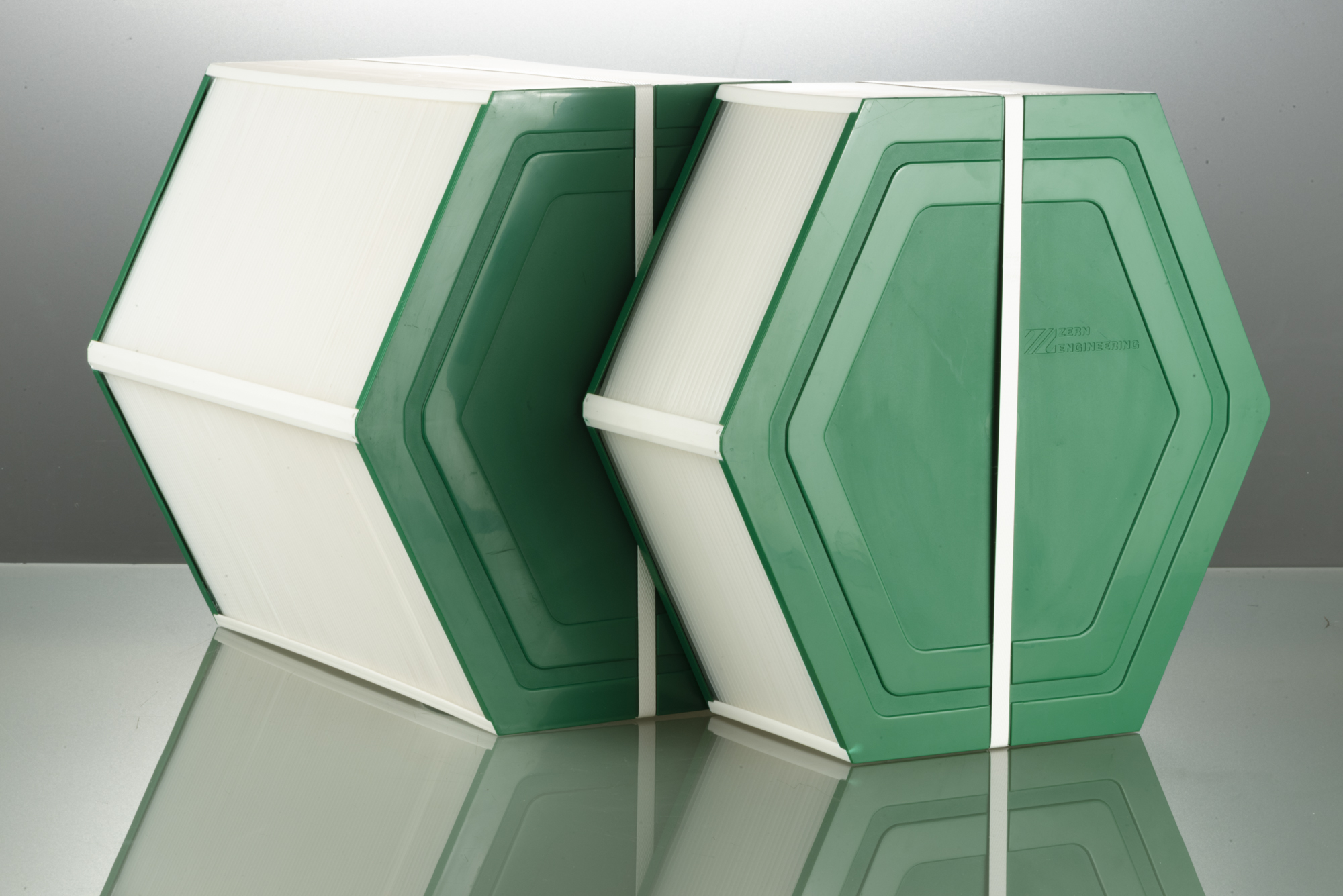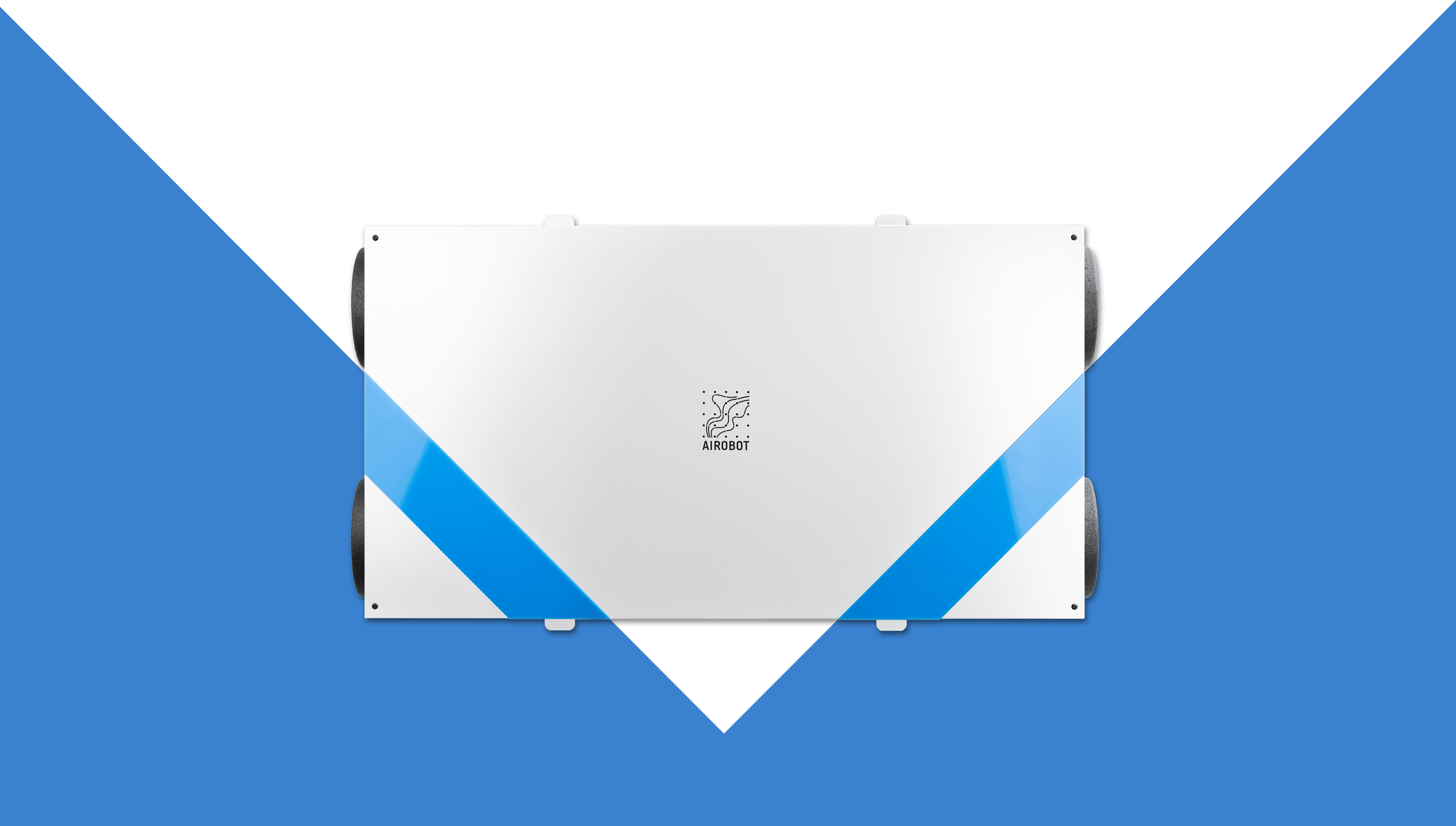How do heat recovery ventilation devices work?
Ventilation devices with heat and energy recovery have been around as a technology for at least ten years. Energy efficiency has increasingly put the further development of this technology on the agenda in recent years. Ventilation with heat recovery is already required by law in every new commercial and private building in Estonia today. The time will likely come when the law also requires designing a ventilation system with humidity recovery when building new houses in central and northern Europe.
This blog post explains how humidity and heat recovery ventilation devices work and highlight some of the key benefits they provide to homeowners.

Let’s start from the beginning. Why do I even need a ventilation system?
Today’s homes are built much more energy efficient than they were just a few decades ago. Energy efficiency is achieved mainly due to better thermal insulation on the outside and inside walls. In general, the buildings keep the room heat much better, and the energy loss during heating is reduced.
However, heat efficiency creates a different problem because the air can no longer get through cracks and window openings. People need fresh air and constant air exchange to feel good and live healthily.
The obvious solution would be to open the windows. Still, in the eastern, northern, and central European climate, this means throwing money out the window because the expensive heat goes out. Opening windows in the cold winter is not a sustainable solution. Homes must have a functioning ventilation system that is also energy efficient. The most modern and energy-efficient solution is a ventilation system with humidity and heat recovery.
Right humidity levels are also essential for healthy living. According to calculations by researchers at the University of Lincoln, an average family of 4 produces around 10.43 liters of water per day. Cooking food, taking a bath and shower, washing dishes, and even breathing produce a lot of moisture in the household, which begins to circulate in the air. If today’s modern home had no ventilation system, such an amount of water would quickly prove to be a problem. Mold, fungi, and dust mites start to grow in an environment that is too humid. On the flip side, too dry air makes people more susceptible to viruses and internal irritation.
How do humidity and heat recovery ventilation devices work?
Let’s start with heat recovery, as it works very straightforwardly. We can use a human nose to describe the working principle of ventilation with heat recovery. When we inhale air in winter, our nostrils heat the inhaled air, and the air reaches the lungs at body temperature. The exhaled air warms the nostrils again, and the process repeats.
Ventilation devices with heat recovery (HRV – Heat Recovery Ventilation) work almost the same way. The air ventilated out of the building is warm, and its heat is transferred to the cold air coming from outside. Plate heat exchangers are built into the ventilation units transmitting this heat. The outgoing, warm air is directed through thin plastic plates that “absorb” heat. The incoming warm air also passes through the heated plastic plates, but it does so from the other side. This way, the two air streams do not come into contact with each other, and the incoming air remains clean.

In a nutshell: A ventilation device with heat recovery uses the heat of the exhaust air to preheat the incoming fresh air. And air already close to room temperature is pumped back into the home. Consequently, the house needs to be heated less because the heat loss is lower than with a conventional ventilation device. The heat recovery efficiency depends on the heat exchanger, and the efficiency of the most high-quality devices is over 90%.
The cross section image of a ventilationdevice below illustrates how the airflow moves through the heat exchanger

Humidity recovery ventilation devices, or ERV (Energy Recovery Ventilation
The working principle of a moisture recovery heat exchanger is very similar to a heat exchanger. A particular innovative polymer membrane technology is used in the plates. This allows humidity to transfer from the exhaust air back into the supply air. Modern dehumidifiers (such as Airobots :)) return up to 80% humidity, making the indoor climate much more pleasant.
The material used in moisture absorbers is antibacterial, which prevents microbes from forming on the plate. Maintenance of the ventilation unit with moisture recovery is also effortless. The dehumidifier needs to be rinsed with water once a year. With Airobot ventilation devices, this is a simple and affordable task for anyone, and there is no need to call a technician. All ventilation devices with humidity recovery also have heat recovery as standard, and their heat recovery efficiency is 90%.

Why should I install ventilation with heat and humidity recovery?
There are two reasons why you should use ventilation units with humidity and heat recovery. First of all, energy saving: in Central or northern Europe climate, it is not conceivable to keep the windows open all the time. Ventilation devices with humidity and heat recovery are the most energy-saving solution. Although these devices are more expensive than regular ventilation devices, they always pay for themselves in the long run because they enable less heating by using the heat of the already warm air from the inside.
Another important reason is health. The air can become too dry during the heating season in the colder climate. If the optimal recommended indoor relative humidity level is 30-50%, it can easily drop below 20% in cold winter. Too dry indoor air makes people more susceptible to viruses and irritates the mucous membranes. Therefore, it makes sense from a health perspective to choose a heat and humidity recovery ventilation unit (ERV). It is essential in wooden houses because excessive drying of the wood causes cracks in the wood. Dust and dirt get into the crevices, which are difficult to remove.
To summarize: ventilation devices with heat and humidity return are good for the wallet and health. In winter, they help to save on heating costs, and in summer, they help to cool, as they remove excess moisture from your home. From the point of view of health, they maintain a more stable indoor climate quality at any home and prevent various pathogens (mold, fungi, and dust mites) from multiplying.
How powerful of a ventilation device should you choose for your home?
When choosing a ventilation device, it is crucial to consider the size of your home because different devices are designed for different-sized homes. The general rule is that you should choose a device at least 30% more powerful than your home requires. Then the ventilation unit does not have to work at full capacity all the time. This will result in additional energy savings and less noise in your home.
Airobot ventilation devices are energy efficient and ensure an ideal indoor climate.
The Airobot heat and humidity recovery ventilation device has a standard counterflow plate heat exchanger. Its advantages are:
- High heat recovery efficiency (ca. 90%), so there is no need for separate air reheating.
- High moisture return efficiency (approx. 80%) makes the indoor climate healthier.
- Durable and efficient. The plate heat exchanger has no moving parts, does not consume electricity, and does not wear out.
- Virus and bacteria-free. In plate heat exchangers, there is no mixing of the air drawn out and the air blown in, which is why the transfer of viruses and bacteria between rooms is prevented. In addition, unpleasant odors do not return to the interior.
Airobot ventilation devices also have CO2, humidity, and temperature sensors. All of these monitor the indoor climate quality in your home and automatically keep it healthy without you having to intervene yourself.
